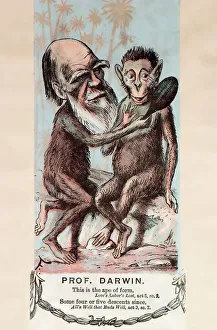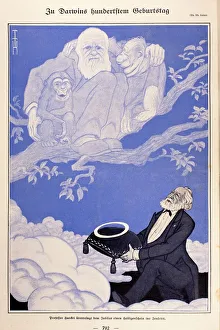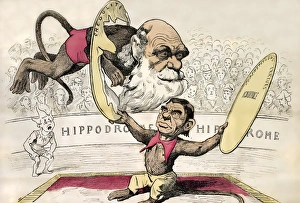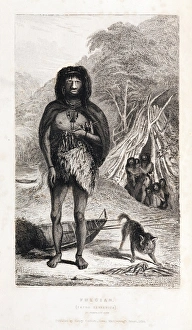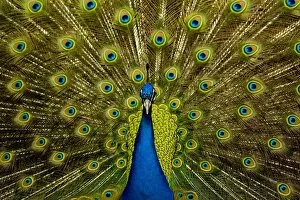Descent Of Man Collection
"The Descent of Man: Tracing the Evolutionary Journey through Art and Satire" In the realm of scientific discovery
All Professionally Made to Order for Quick Shipping
"The Descent of Man: Tracing the Evolutionary Journey through Art and Satire" In the realm of scientific discovery, few theories have sparked as much controversy and fascination as Charles Darwin's theory of evolution. From his groundbreaking book "The Descent of Man" to the artistic interpretations that followed, this caption delves into a captivating journey through time. It all began in 1874 with Faustin's Monkey Darwin cartoon, which humorously depicted Darwin himself evolving from an ape-like creature. This satirical take on human evolution continued in 1909 with another cartoon featuring apes alongside Haeckel, a prominent advocate of Darwinism. Punch magazine joined the conversation by presenting a logical refutation of Mr. Darwin's theory through an engraving in 1878. The image portrayed Darwin transformed into a circus monkey, challenging his evolutionary ideas. Meanwhile, Ernst Haeckel contributed significantly to visualizing human evolution with his evolutionary chart from protoplasm to Papuan in 1876. This wood engraving showcased the progression from simple organisms to more complex forms over time. Amidst these depictions came the portrayal of "A wild man of the woods, " capturing our primitive ancestors' existence before civilization took hold. It serves as a reminder that we are all connected to our ancient past. As debates raged on about Darwin's theory, Punch once again presented their skepticism in April 1871 with another logical refutation engraving. These satirical pieces added fuel to discussions surrounding human origins and challenged established beliefs. Ernst Haeckel's evolutionary chart resurfaced in 1876, illustrating how life evolved from single-celled organisms into diverse species like Papuans - highlighting humanity's place within this grand narrative. "The Descent of Man" reached New York in 1923 when it was published there for wider audiences eager to explore mankind's origins further. This milestone marked its enduring impact on scientific thought and public interest.

